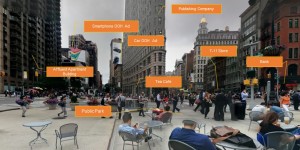In advertising technology, we’re prone to using comparative language to explain a product or service to another product or service in popular use, because the product development, technologies and uses in this industry are typically greenfield. In other words, they’re not just improvements on ideas they’re typically completely new. For instance, a person may describe Instagram as Twitter with pictures instead of text. Or, one might compare an advertising exchange to the stock exchange – who may then need to compare a stock exchange to a cattle auction with detailed spec sheets on each bovine, depending on the audience.
“Analogies prove nothing that is true.”
We learned in grade school, that this process of comparison is called an analogy. Analogies can be defined as the comparison of two things to highlight some point of similarity so that understanding of the one being defined is more easily attainable. This, however, doesn’t make them necessarily true. Sigmund Freud said, “Analogies prove nothing that is true.” Freud is a genius. While comparison certainly allows the listener to more easily grasp a concept that does not necessitate actuality, or truth as Freud put it, to the genuine likeness of said comparative subjects.
There are multiple speakers, companies and Powerpoint decks chock full of language comparing location to the cookie. Desktop display blazed the behavioral data trail well before anyone believed that smartphones would one day overtake desk/laptops as the main access point to the internet. Therefore, great mental capital was expended on explaining how internet cookies (a piece of text a web server can store on a user’s hard disk) allow advertisers to understand online behavioral patterns, thusly, what type of person/profile is running the machine. Furthermore, there was even greater energy expelled on dissuading brands from utilizing content or context to make online ad buys because cookie (behavioral) technology was a better determinant of audience.
Success! Many companies began to buy advertising this way and the behavioral targeting industry was born. Then, along came mobile. Cookies don’t really work for mobile advertising for a litany of reasons in which this post need not delve. Instead, let’s focus on what does work in mobile really well – location. Given that just about everyone with a smartphone takes it with them everywhere they go, the signals given off by their GPS tell a story about that person. With that in mind (and using Freud’s analogy to truth principle as a backdrop) there may be another more apt analogy to use that accurately describes what location does for advertisers. That is, “location is the new con…” Pick your con, be it ‘text or ‘tent. Just, don’t call it the new cookie.
Location allows us to intermingle understanding of the physical world and visitation patterns to define interest and intent. This is extremely powerful. As my cohort, Dan Silver, suggested, building location based audience is a cocktail of a multitude of inputs. Unlike the cookie, location takes into account real-world behavioral data that can be verified through location verification. Location also integrates 3rd party data associated with a given location for even greater understanding. Plus, phones are rarely shared, so reaching the intender is all but guaranteed when serving an ad. Lastly, there is a much higher barrier to entry to going someplace, so luxury item targeting is more precise than with cookies. Cut to scene of teenager clicking on Porsche ads. These truths, along with the fact that mobile advertising can be proven to understand ad influence through visitation study, makes for a much more robust picture of an audience and advertising impact than can be delineated via the cookie.
So the next time you’re in a room full of advertisers asking about location technology and how it works tell them, “It’s the new con…” A combination of the content associated with the visitation data surrounding that discrete latitude/longitude, plus the context of what the events, businesses, and/or homes are comprised of in that location. Hopefully, you’ll be able to help them understand the truth about location targeting more accurately through that analogy.




Stormy Disorda
Location is the New Con